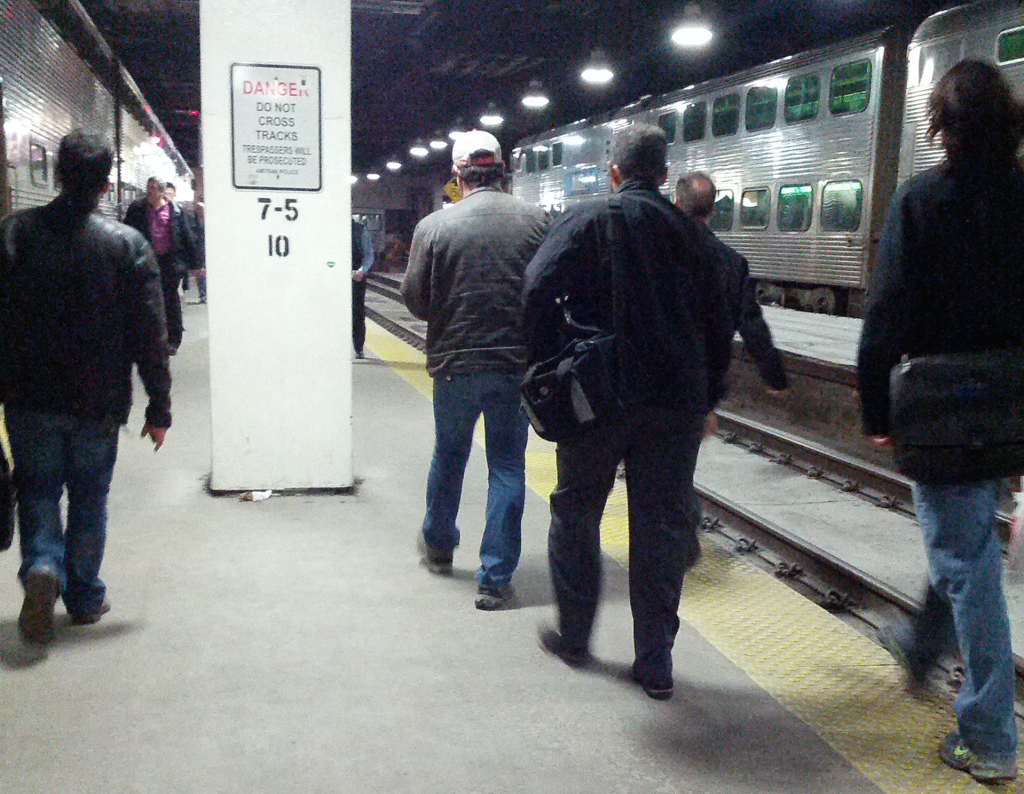By Brent Stephens on June 24, 2015
Economists Meredith Fowlie and Catherine Wolfram at the University of California, Berkeley and Michael Greenstone at the Energy Policy Institute at the University of Chicago (EPIC) have published a new working paper on the economics of residential energy efficiency retrofits, in which they present some discouraging results:
I first read the short research summary from EPIC, “Costs of Residential Energy Efficiency Investments are Twice their Benefits: Implications for Policy,” and found some surprising conclusions that led me to dig deeper into the actual working paper, “Do Energy Efficiency Investments Deliver? Evidence from the Weatherization Assistance Program.”
Continue Reading →
By Brent Stephens on May 1, 2014

We recently partnered with investigative reporter, Dave Savini, from CBS 2 Chicago to make air quality measurements in and around Metra trains and train stations in downtown Chicago. The Chicago Tribune had previously reported high concentrations of soot (black carbon particles) onboard trains over 3 years ago, which were thought to be caused by re-entrainment of diesel engine exhaust. We know that diesel exhaust emits a number of pollutants that are problematic for respiratory and cardiovascular health, including ultrafine particles, black carbon particles, metals, and VOCs and SVOCs. This report prompted Metra to take action, primarily by installing particle filters on the cabin ventilation systems (MERV 13 instead of MERV 8) and by installing (or planning to install) devices that shut-off the diesel engines as they enter stations. The filters were shown in 2011 to measurably reduce black carbon particle concentrations in the rail cars, which was good to see. I’ve also found links to documents showing that Metra was upgrading ventilation systems to include vent hoods on intakes and exhausts, manual closing of outdoor air dampers, and exhaust deflectors on the locomotives themselves. I’m not sure of the status of these repairs or the extent to which MERV 13 filters have been installed across the fleet.
UPDATE: Watch a video of the CBS 2 story
Continue Reading →
By Brent Stephens on November 6, 2013
This post was originally written for microBEnet and is copied here.
First of all, Happy Halloween everyone. I think my costume this year will be a blogger!
For those that don’t know me, I’m Brent Stephens, an assistant professor in the Department of Civil, Architectural and Environmental Engineering at Illinois Institute of Technology in Chicago, IL. I call my research team the Built Environment Research Group and my teaching and research interests are primarily in characterizing energy and air quality in buildings. Some people would also call me a “building scientist,” and it’s that description that brought me to microBEnet. Since Fall 2012, my team and I have been working with Jeff Siegel at the University of Toronto on Jack Gilbert’s Sloan-funded Hospital Microbiome Project. Continue Reading →
By Brent Stephens on November 17, 2012
After nearly 4 months living here in Chicago, I finally made it down to visit The Plant this afternoon. If you haven’t heard of it, it’s an old meat packing facility on the south side of town that is being converted into a sort of eco-industrial park where each business that sets up shop inside the building will be able to align their energy and resources inputs and waste outputs with other businesses around them. Read on for a summary of what I learned about their plans and their individual processes during a 2+ hour long tour today given by board member and IIT adjunct faculty member Blake Davis!

Main lobby for now; brewery taproom in the future!
Continue Reading →


